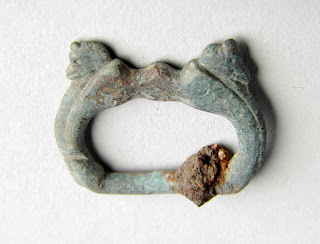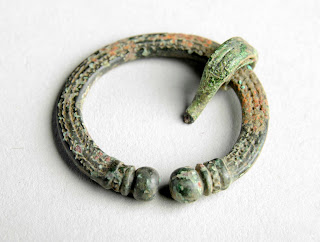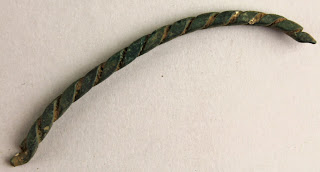I am privileged to volunteer with the archaeology collection where I am helping to add object records to the computer database. I’ve catalogued everything from swords and arrowheads to brooches and coins. Currently, I’m looking at finds from a Roman site at Wattle Syke, excavated as part of the A1 Bramham to Wetherby upgrade work.
The site has been researched and published before being deposited at the museum. I’ve been working through the publication, pencilling in the new museum numbers and creating a record for each object on the database. As well as the identification, I’m typing in where on the site each object was found so they can be related back to excavation results. Digital record photos are also added.
This is a fascinating chance to open up the boxes and the bags and look at some really good Roman finds first hand. Reading the finds identifications and specialist reports is a great experience, teaching me what things are and what they can tell us.
The objects are made from a range of materials and cover all aspects of Roman life. Below are some favourites from my current box – the copper alloys.
The intricately decorated Roman brooch pictured above is in remarkable condition, despite dating from the 4th Century AD. The preservation of metal objects at Wattle Syke was very good, so much so that a lot of the metalwork was thought at first to be modern.

Some of the objects need to be examined very closely in order to see the details. The picture on the right shows a belt buckle with horses’ heads decorating the frame. These features don’t show up very well on the object itself but were recognised by the researcher and have been highlighted in an illustration, which has been added to the database.
The object below is another good example of why having the specialist reports to hand is so informative. It was thought to be a pair of tweezers at the time of excavation but further investigation led to an expert identifying it as a clasp. An X-Radiograph of the object revealed two rivets between the arms which are not visible to the eye.
Finally this twisted Roman bracelet (below) is really interesting. It is broken, but here that is an advantage as it means we can see how it was made - by twisting two strands of copper alloy wire together. We can say it was a right-hand twist because of the s shape the twist has formed, whereas a left hand twist would look like a 'z'.
Objects from the past can tell us so much about the people who made and used them. I wonder what will be in the next box….









No comments:
Post a Comment